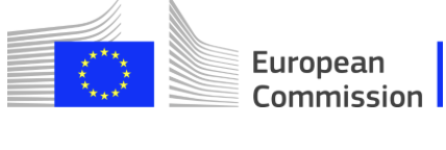ChemiNova: advancing technology for monitoring European cultural assets
An international consortium is developing smart technologies for safeguarding heritage in the face of climate change and conflict.
Europe's cultural heritage is a testament to centuries of human creativity, resilience, and ingenuity. It includes rich and diverse traditions, monuments, collections and communities that hold stories of the past and provide knowledge and understanding of the continent’s history.
Threats to cultural heritage, such as climate change and conflicts, have become increasingly apparent in recent years. In the face of mounting challenges, safeguarding these invaluable assets has never been more urgent.
To meet the demand for accessible and systematic tools to monitor cultural heritage—both built and movable—while gaining support from local communities, a consortium of interdisciplinary partners has established ChemiNova. This innovative initiative is funded by the European Union’s Horizon Europe Framework Programme.
ChemiNova is a diverse international partnership that brings together academia, NGOs, the public and private sectors, and the cultural heritage field. This collaborative effort aims to produce a practical toolkit that employs mixed and augmented reality, as well deep learning and 3D modeling to carry out mapping and documentation of the conditions of heritage assets, while allowing users to predict patterns and carry out inspections — in real time, on-site or remote, and with the help of local community members.
ChemiNova technology is currently being developed and tested using four different case studies from across the continent: the historic campus and Martínez Guerricabeitia contemporary art collection of the University of Valencia, the collection of the Library of Human Anatomy in Palermo, the Schönbrunn Palace in Vienna, and Saint Sophia Cathedral in Kyiv.
Fostering Community-Scientist Collaboration for Cultural Heritage Preservation
At its core, ChemiNova seeks to empower conservation professionals, engage local communities and harness cutting-edge technology to protect and preserve Europe's rich cultural legacy.
Central to ChemiNova's mission is the development of an intelligent computational system that goes beyond current technologies. By leveraging a myriad of data, ChemiNova aims to tackle structural and chemical damage to cultural heritage, from monuments and sites to museum collections, focusing on two specific human-induced threats: climate change and conflict. This system will provide conservators with a single framework for documenting, digitizing, classifying and sharing information.
ChemiNova is more than just a technological solution — it is a collaborative effort that engages experts and communities. Through citizen science initiatives, local communities will be empowered to contribute to conservation efforts by providing data and raising awareness about the impacts of climate change and other hazards on cultural heritage. By placing end-users at the heart of its tools and methods, ChemiNova ensures that its solutions are accessible, adaptable and tailored to the diverse needs of conservation practitioners and non-experts alike.
As we embark on this journey, our commitment to ChemiNova represents a bold step forward in the ongoing effort to safeguard Europe's cultural heritage for future generations.
What results are we expecting to achieve?
A constellation of software tools that will advance in conservation science practices, e.g., by automatically detecting structural and chemical damages on cultural heritage assets (ChemiAI), –especially those due to human-induced threats (climate change and/or conflicts)–, making condition reports interactive (ChemiInspection), allowing immersive collaboration of remote users (ChemiSensing) or inmersive experiences to connect people to cultural heritage and the impacts of human-induced threats (ChemiSee).
A trustworthy dataset of chemical and structural features that could be potentially used by any practitioner and will increase scientific conservation.
Capacity building modules for heritage conservation professionals.
Best practices to connect people to cultural heritage and the impacts of human-induced threats through events, educational toolkits and networking with local communities.
- Recommendation to EU policies about climate change. The project will produce a charter or recommendation about the effects of climate change on cultural heritage. This charter will constitute the first step for the creation of a legal framework for heritage and climate change. This result will have an impact on current climate politics and in the safeguarding of European cultural heritage.
- Scientific Papers
Who are we?
- Universitat de València (UVEG), Spain
- International Centre for the Study of the Preservation and Restoration of Cultural Property (ICCROM)
- Università degli Studi di Palermo (UNIPA), Italy
- National Conservation Area "St. Sophia of Kyiv" (NCA-SSK), Ukraine
- Consiglio Nazionale delle Ricerche - Institute of Atmospheric Sciences and Cli-mate (CNR-ISAC), Italy
- Gottfried Wilhelm Leibniz Universität Hannover (LUH), Germany
- 4D-IT GmbH (4D-IT), Austria
- University of Burgundy (UB), France
- Schloß Schönbrunn Kultur- und Betriebsges.m.b.H. (SKB), Austria
- DIADRASIS Interdisciplinary research on Archaeological & Architectural Conservation (DIADRASIS), Greece
- Universitatea Tehnica Cluj-Napoca (UTC), Romania
- ART+COM AG (ARTCO), Germany
| ChemiNova has received funding from the European Union’s Horizon Europe Framework Programme under grant agreement 101132442. |
Find more information on ChemiNova on its website and social media channels: YouTube, LinkedIn and Instagram.

